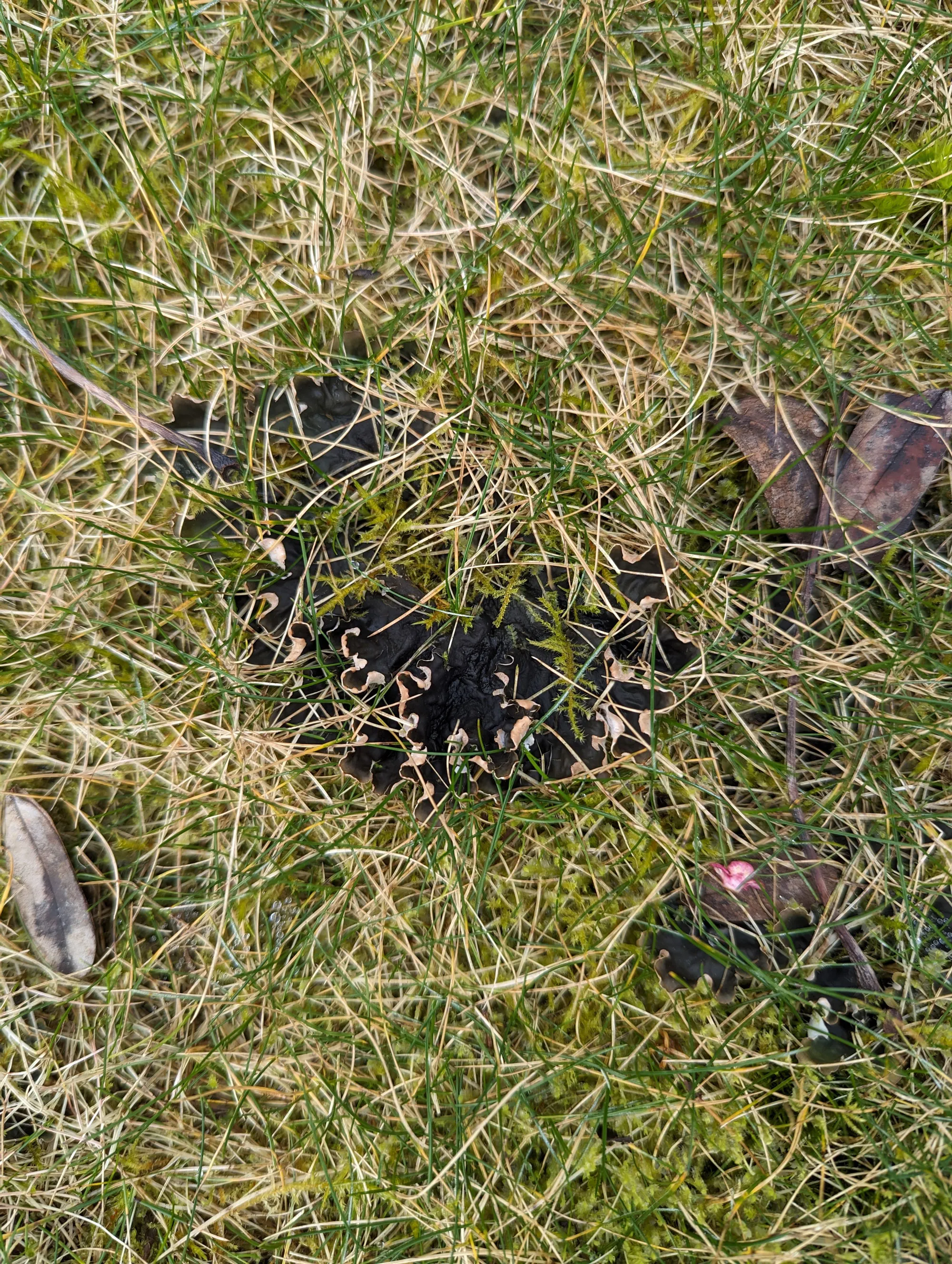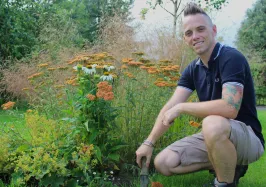Ask a Gardening Question Forum
 Lee Burkhill: Award Winning Designer & BBC 1's Garden Rescue Presenters Official Blog
Lee Burkhill: Award Winning Designer & BBC 1's Garden Rescue Presenters Official Blog

Welcome to the ultimate beginner gardening and garden design forum! Where no gardening question is too silly or obvious. This online gardening forum is run by Lee Burkhill, the Garden Ninja from BBC 1's Garden Rescue and a trusted group of experienced gardeners.
Whether you are a beginner or an expert gardener, it's a safe place to ask garden-related questions for garden design or planting. If you have a problem in your garden or need help, this is the Garden Forum for you!

Posting Rules: This space is open for all garden-related questions. Please be polite, courteous and respectful. If you wouldn't say it to your mum's face, then don't post it here. Please don't promote, sell, link spam or advertise here. Please don't ask for 'cheeky' full Garden redesigns here. They will be deleted.
If you need a garden design service, please use this page to book a design consultation. I will block anyone who breaks these rules or is discourteous to the Garden Ninja Community.
Join the forum below with your gardening questions!
Quote from silverbadger on 4th February 2024, 1:46 pmHi all. First time posting here, but I am at my wits end with my garden. Feeling like I need to hire a digger and just dig it over. I have this fungae/weed/moss, I don't know what it is, growing all over my garden. I am looking for tips, advice, anything to help me to start get a healthy garden back. I know there are no quick fixes, but some sound honest advice would be appreciated.
I assume it's moss at the bottom of the pic (bright green) and then this black 'stuff' with a white edge is all scattered around the garden. There are a couple of small trees in the garden. Thanks in advance.
Hi all. First time posting here, but I am at my wits end with my garden. Feeling like I need to hire a digger and just dig it over. I have this fungae/weed/moss, I don't know what it is, growing all over my garden. I am looking for tips, advice, anything to help me to start get a healthy garden back. I know there are no quick fixes, but some sound honest advice would be appreciated.
I assume it's moss at the bottom of the pic (bright green) and then this black 'stuff' with a white edge is all scattered around the garden. There are a couple of small trees in the garden. Thanks in advance.

Quote from Lee Garden Ninja on 6th February 2024, 5:08 pmHi @silverbadger
Please don't be disheartened by the state of your lawn; lawns are one of the easiest parts of a garden to fix. You've also come to the right place for help, as the Garden Ninja community and blog has hundreds of beginner gardening guides and tutorials, all free to use!
What a fascinating specimen of a lichen you have! Peltigera, to be exact,sometimes known as pelt lichen or incorrectly 'Dog Lichen'. They tend to form around the bases of rotten trees or damp lawns. The good news is they are totally harmless and actually a sign of a really vibrant ecosystem in your garden, so ten Ninja points for that!!! I wouldn't worry too much unless it's in places where you find it unsightly.
As for the moss, there is a super easy and satisfying way to remove it, and that's through lawn scarification, which you can read on here. It may look brutal but scarifying your lawn is the best way to breathe life back into an old lack lustre lawn.
https://youtu.be/8oeYfHJvmsQ
Let's take a closer look at the black fungus-looking lichen that you have uncovered.
Beginners Guide to Dog Lichen and why you should celebrate it!
Peltigera membranacea, commonly known as membranous pelt lichen, is a fascinating organism that is often found in woodland areas, particularly in damp and shaded environments. While it's not a plant that you typically cultivate in a garden, understanding its characteristics and ecological role can be interesting for beginner gardeners who are curious about the natural world.
Fossil records suggest that lichens have been present on Earth for at least 400 million years. Lichen fossils dating back to the early Devonian period, around 400 million years ago, have been found, indicating their ancient origins. These ancient lichens likely played a crucial role in colonizing terrestrial habitats and contributing to the formation of soil and ecosystems. Basically they are super tough and amazing things to behold Silverbadger!
Lichens are remarkably resilient organisms capable of surviving in diverse environments, from polar regions to deserts and even in harsh conditions such as high altitudes and polluted urban areas. Their ability to thrive in challenging environments and adapt to changing conditions has contributed to their longevity on Earth. They are the original Garden Ninjas of the plant world.
1.Identification
- Peltigera membranacea is a type of lichen, which is a symbiotic association between fungi and algae or cyanobacteria.
- It typically forms flat, leaf-like structures with a membrane-like appearance, hence its name, "membranous pelt lichen."
- The thallus (the main body of the lichen) is usually greenish-grey to brownish-green in colour and has a soft, flexible texture.
2. Habitat
- Membranous pelt lichen thrives in moist and shaded environments, often growing on the forest floor, tree trunks, or rocks.
- It prefers areas with high humidity and moderate to low light levels, such as deciduous or coniferous forests.
3. Ecological Importance
- Peltigera membranacea plays a vital role in the ecosystem as a pioneer species in colonizing bare substrates and facilitating soil formation.
- Lichens like Peltigera help to stabilize soil and retain moisture, making them important contributors to soil fertility and biodiversity.
- They also serve as food sources for various wildlife species, including insects and small mammals.
4. Cultural Significance
- Historically, lichens like Peltigera membranacea have been used for various purposes by indigenous cultures and early settlers, including as dyes, food sources, and medicinal remedies. (though I wouldn't recommend it without a proper lichen expert!!)
- Today, they continue to be studied for their potential pharmaceutical and ecological applications.
5. Conservation of Lichen
- While membranous pelt/ dog lichen is not considered endangered, it is important to recognize the threats to lichen populations, including habitat destruction, air pollution, and climate change.
- As stewards of the environment, gardeners can contribute to lichen conservation efforts by promoting healthy ecosystems and supporting policies that protect biodiversity.
I would advise you to cut and scarify your lawn first, get that win under your belt and then come back to the lichen if you're still not a fan!
Good luck and keep us posted!
Lee Garden Ninja
Please don't be disheartened by the state of your lawn; lawns are one of the easiest parts of a garden to fix. You've also come to the right place for help, as the Garden Ninja community and blog has hundreds of beginner gardening guides and tutorials, all free to use!
What a fascinating specimen of a lichen you have! Peltigera, to be exact,sometimes known as pelt lichen or incorrectly 'Dog Lichen'. They tend to form around the bases of rotten trees or damp lawns. The good news is they are totally harmless and actually a sign of a really vibrant ecosystem in your garden, so ten Ninja points for that!!! I wouldn't worry too much unless it's in places where you find it unsightly.
As for the moss, there is a super easy and satisfying way to remove it, and that's through lawn scarification, which you can read on here. It may look brutal but scarifying your lawn is the best way to breathe life back into an old lack lustre lawn.
Let's take a closer look at the black fungus-looking lichen that you have uncovered.
Beginners Guide to Dog Lichen and why you should celebrate it!
Peltigera membranacea, commonly known as membranous pelt lichen, is a fascinating organism that is often found in woodland areas, particularly in damp and shaded environments. While it's not a plant that you typically cultivate in a garden, understanding its characteristics and ecological role can be interesting for beginner gardeners who are curious about the natural world.
Fossil records suggest that lichens have been present on Earth for at least 400 million years. Lichen fossils dating back to the early Devonian period, around 400 million years ago, have been found, indicating their ancient origins. These ancient lichens likely played a crucial role in colonizing terrestrial habitats and contributing to the formation of soil and ecosystems. Basically they are super tough and amazing things to behold Silverbadger!
Lichens are remarkably resilient organisms capable of surviving in diverse environments, from polar regions to deserts and even in harsh conditions such as high altitudes and polluted urban areas. Their ability to thrive in challenging environments and adapt to changing conditions has contributed to their longevity on Earth. They are the original Garden Ninjas of the plant world.
1.Identification
2. Habitat
3. Ecological Importance
4. Cultural Significance
5. Conservation of Lichen
I would advise you to cut and scarify your lawn first, get that win under your belt and then come back to the lichen if you're still not a fan!
Good luck and keep us posted!
Lee Garden Ninja
Quote from silverbadger on 6th February 2024, 5:25 pmAmazing info Lee, thank you! It just looks so bad in the garden and always worried about letting my child play because of it. Will scarify and go from there. Thanks again.
Amazing info Lee, thank you! It just looks so bad in the garden and always worried about letting my child play because of it. Will scarify and go from there. Thanks again.


Vuelo Top 10 Garden Blogger Award 2019
Chelsea Flower Show Director Generals Trade Stand Award 2018
5 Star Trade Stand Hampton Court 2018
Garden Media Guild New Talent 2017 Finalist
RHS & BBC Feel Good Gardens Winner 2016
 To my YouTube channel
To my YouTube channel
JOIN THE NINJAS
Join our Ninja community for your Exclusive Discounts
JOIN THE NINJAS

Be the first in line for new Guides, Discount codes and Offers